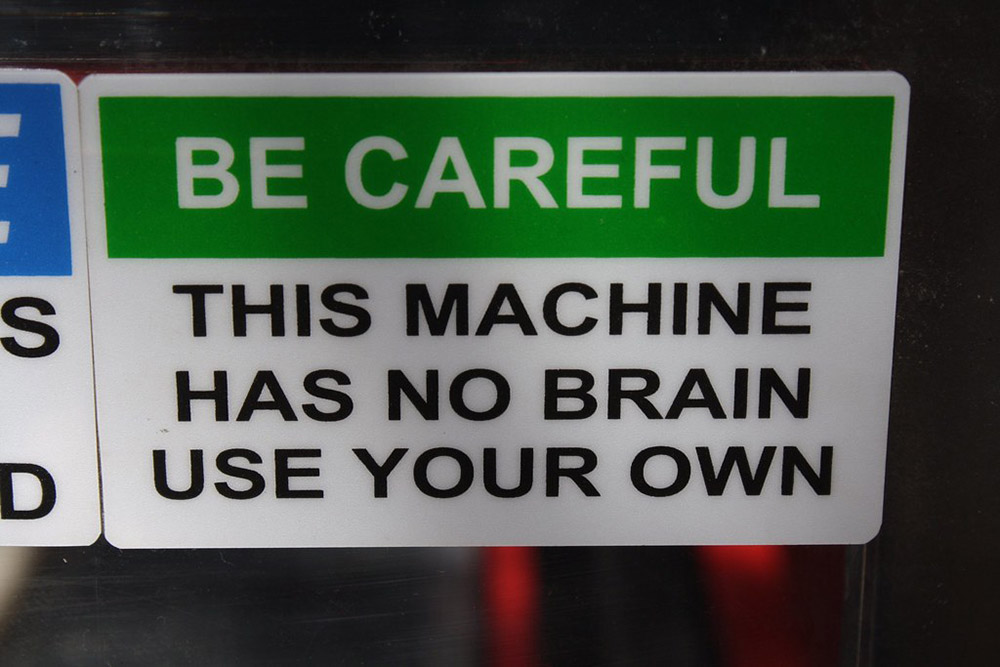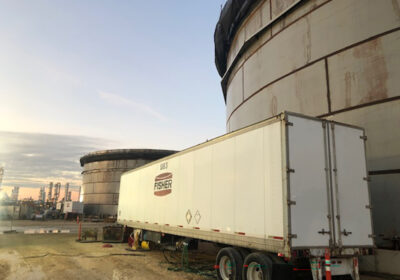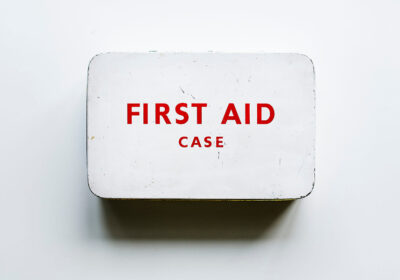7 TIPS FOR SAVING LIVES AND LIMBS

This week we welcome Edward Salazar, of JED Alliance Group, to the Think Tank. As we continue our focus on construction safety in the field erected tank business and other areas of the construction industry, Edward shares some key insights based on his experience with heavy equipment.
When we think about improving construction site safety, many of us think about training and awareness for the machinery operator. But the majority of the thousands of injuries and hundreds of fatalities involve people on the ground such as co-workers, supervisors, and those passing by. According to the August 2013 BLS annual report on fatal occupational injuries, 775 workplace deaths occurred in the private construction industry in 2012 (a 5% increase of 2011). OSHA and MSHA studies report that almost all construction-related accidents are preventable. But all too often safety awareness and using caution when performing routine activities are lacking, even with experienced equipment operators. If you need visual proof, check out this construction fatalities map.
More often than not, construction site accidents are not really accidents at all, but rather consequences of intentionally disregarding laws and regulations designed to preserve worker safety and health. It can be frustrating for owners and foremen because frequently the workers place themselves in danger. It seems it is human nature to fall into bad habits when the consequences are not new and fresh in our minds and when it is not clear what the consequences are.
Make the most of your planning meetings and safety briefs by reviewing points such as the tips below frequently. With the abundance of online videos of accidents as well as proper methods for ensuring safety, a quick online search will reveal good examples of how to stay safe and what happens when you don’t. Insurance companies, construction companies, and even OSHA share safety meeting videos on YouTube. This is a free resource to help make safety real and present for your job site workers. Find ways to have your safety talk go viral like showing snippets of this 1970s safety training film. The campy style of the video and its tagline, “Shake hands with danger” will likely be mentioned throughout the day putting safety at the forefront multiple times. Figuring out how to put safety at the forefront and make it personal to each worker is the key to improving your safety records, reducing downtime, reducing costs of workers’ medical and legal claims, and most importantly, saving lives.
7 Tips to Saving Lives and Limbs
1. Getting On or Off Machinery
The #1 cause of injury to equipment operators, including truck drivers, is getting on or off equipment. Because workers do this so often, getting away with carelessly entering and exiting machinery reinforces bad habits. These good habits help prevent these types of accidents:
- Check your work boots and gloves. These need to provide good grip and mud or wetness can make them slippery surprising you with that “nothing left to hold onto” feeling.
- Make a habit of using three points of contact, basically always having 3 of your feet and hands touching the machine. Especially in winter when you have extra-thick gloves, hats that may impede peripheral vision, or insulated coveralls that make movements more difficult, move slowly and deliberately.
- Engage your entire hand and foot. Avoid a finger-hold or toe-hold grip.
- Install appropriate number of large sized foot and hand holds so that stretching to get a grip can be avoided. If there are no holds, use a step ladder.
- Do not carry objects while getting on or off the machinery.
- Never ever jump off; always leave the machine in a controlled manner.
2. Complacent Operators and Foremen
Experienced operators are a construction company’s most favored asset. But sometimes the comfort level that comes with years of experience is the very underlying factor that results in an accident. Foremen and company owners say, “He’s been running that machine for 15 years”. But what they are really saying is that they take safety awareness and cautionary reminders for granted and they are not fulfilling their obligations under OSHA, MSHA, or civil liability law.
And what many don’t consider is that when an operator climbs onto a new model, its functions and configuration may be different. Differences in how a machine maneuvers, swings, or handles a slope can cause tipping or loss of control when the operator is unaware that the equipment is not the same as his old machine. Regulations require each operator to have specific training on the equipment they run and the training must be verifiable. Keep the course completion certificate on file. Often, the training is offered by the equipment dealer’s customer service department. Reviewing the equipment’s operating features, watching a video (if available), and operating the machine under the supervision of an instructor are valuable reminders. And every now and then that “old dog” will learn a new trick!
This advice is not only for safety of the operator and those around him, but also for the preservation of your investment. Just think about how much that piece of machinery cost you!
3. Backing
Moving in reverse is dangerous, even in your personal vehicle, much less on a very large piece of equipment with a multitude of blind spots. Backup alarms on a job site are easily ignored due to noise levels, and because they are heard so frequently they can become white noise to many workers. Operators should ensure that no one or nothing is behind them by getting off the machine and looking and using a spotter.
Use the equipment’s features that help you with backing such as wide-angle mirrors. Be sure they are always clean and adjusted for the best view. Newer equipment models sometimes offer rear-mounted cameras or alarms that sense the presence of objects including people which are significant improvements.
4. Loading and Unloading Equipment
Risk of machine roll-over is always present during loading or unloading no matter how firm or level the ground is. Here are tips to minimize that risk:
- Inspect the trailer deck and carefully check clearances. Make every effort to load and unload in an area that allows enough open space above and around the trailer and machine so you can easily maneuver. I know, easier said than done on many urban jobsites.
- Ensure the machine is at zero energy state (ZES) before moving the trailer when the machine is loaded.
- Use caution when releasing binders to unload as tension built up during hauling could cause the chain or handle to recoil.
- Make sure the machine clears the ramps before turning. Center the machine on ramps and stay straight. Use a spotter for guidance. Be sure the spotter is in a position safe from harm in case of equipment failure or operator error.
- Make sure the machine clears the ramps before turning.
- Do not allow people to stand or walk near the equipment during loading or unloading.
5. Curious and Complacent Onlookers
Even veteran construction workers who know better naturally gravitate toward looking into a hole being dug or watching a crane’s delicate ballet with tons of materials swaying around. If you are the site foreman or a spotter, do not allow your laborers or passersby to put themselves in harm’s way. If you are the operator, stop the machine use your horn to get the attention of people to move out of the area. Use warning tape, barriers, signs, and whatever it takes to keep people out of the area that heavy machinery is being used. Remember to clear and rope off the entire swing radius of the machine.
6. Overhead or Underground Obstructions
Overhead obstructions and underground utilities such as electrical lines, water or sewer pipes, and gas lines pose threats to the building site and surrounding areas. Foremen should always call the appropriate agency to survey the area for underground utilities. And remember to use caution because markings can be incomplete or inaccurate. Always hand dig when nearing known danger zones.
Use whatever it takes to mark off where not to dig or where overhead lines or other low clearances are present. Use signs, barrier tapes, barrels, or sawhorses as constant reminders to stay clear.
7. Seat Belt Usage
Your seat belt or harness saves you from harm and helps to keep you in control when your machine starts to tip. There are no excuses to not be securely attached to your machine. This is the simplest tip to follow, yet many operators wear seat belts only when the cab door is open and that is a mistake. If the equipment tips and throws you out of your seat, you have no chance of bringing the machine back to a safe position.
Safety First and Foremost
Manufacturers of construction equipment and machinery are doing a great job producing safer and more reliable machines. Improvements are made with each model. But the operator and other job site employees must make it their #1 priority to protect their own safety and that of their co-workers. Your safety program should be referred to daily. Your safety meetings should be engaging. Each job should be evaluated for dangers and challenges and discussed thoroughly and frequently with the crew. Seek input on how to make the job site safer as the ones who are on the ground will have the best knowledge. Ensure each operator is trained on the exact model of equipment they are operating. Recognize accident-free achievements as it is the most positive way to keep safety first and foremost.
Edward Salazar is co-owner of JED Alliance Group, Inc. When buying used heavy equipment to refurbish and sell, he visits many job sites where he sees safety being ignored. When he and his staff train their customers on purchased equipment, they reinforce the importance of knowing the machine and taking precautions. Feel free to contact Edward at 321-251-4844
Click here to read more of our blogs




